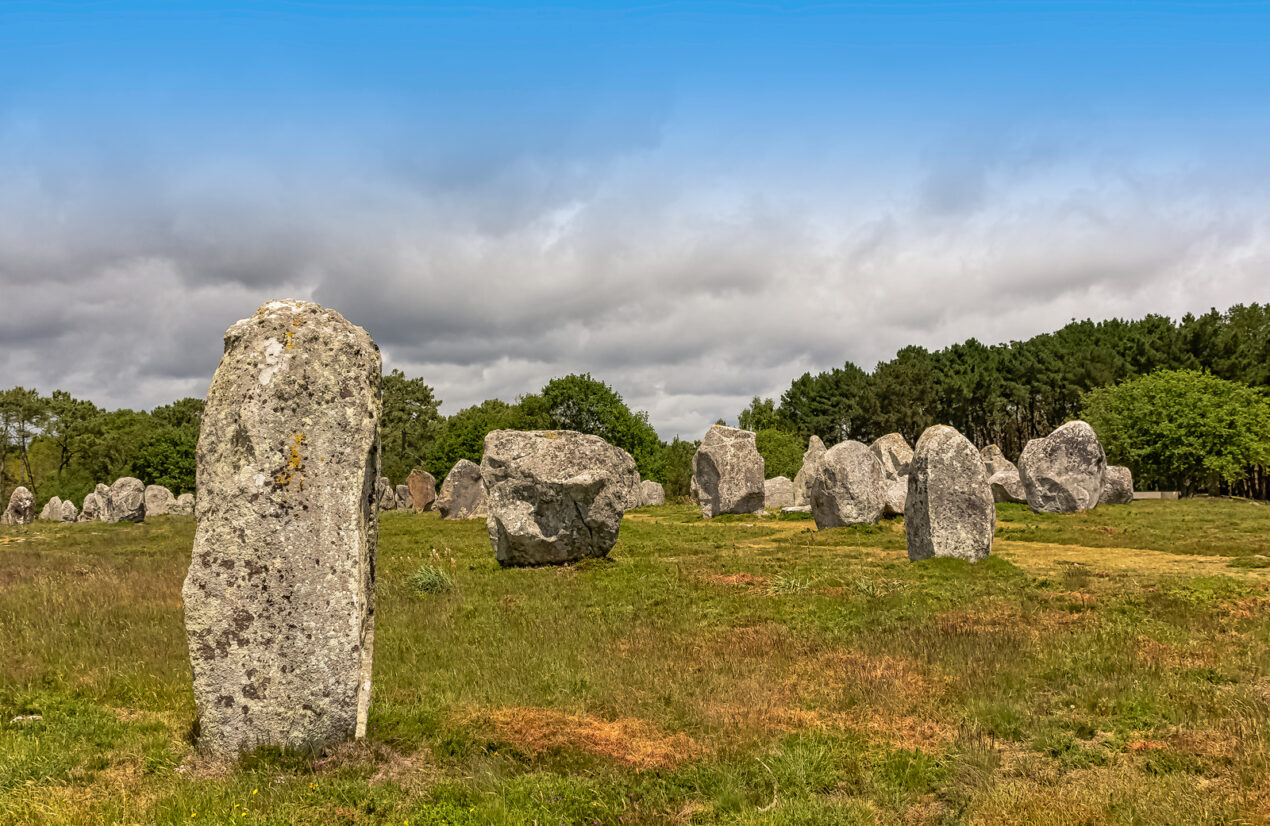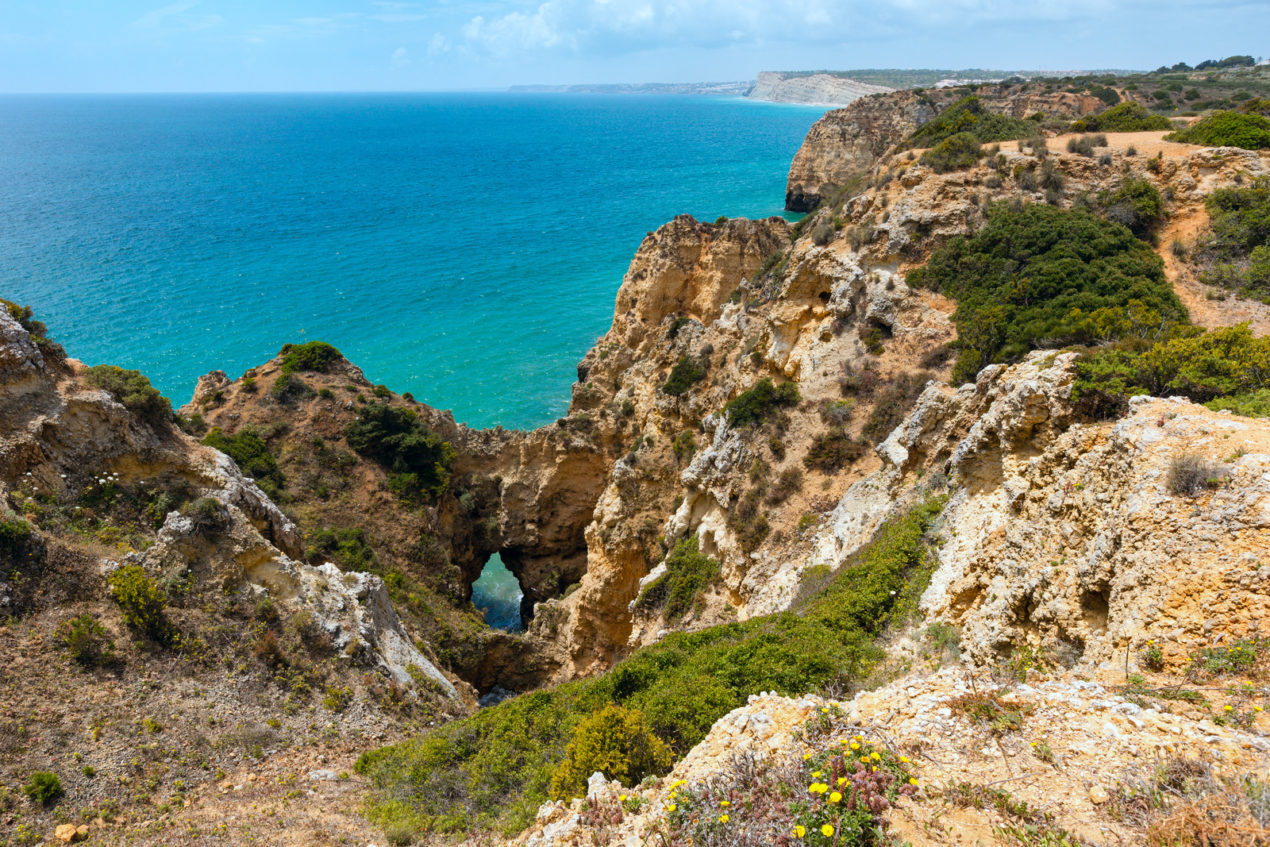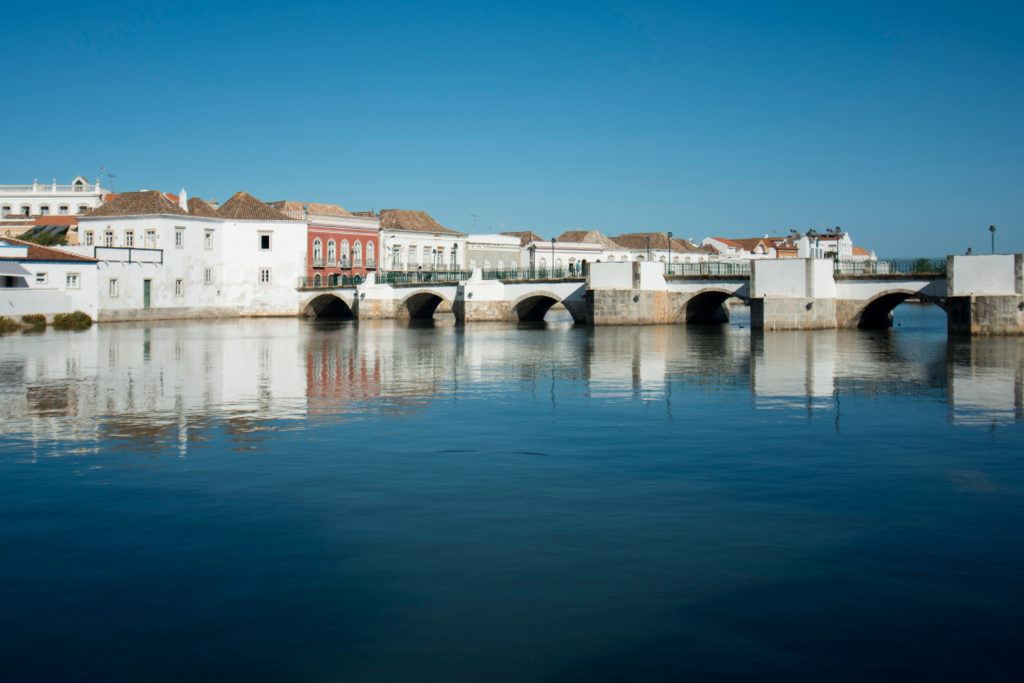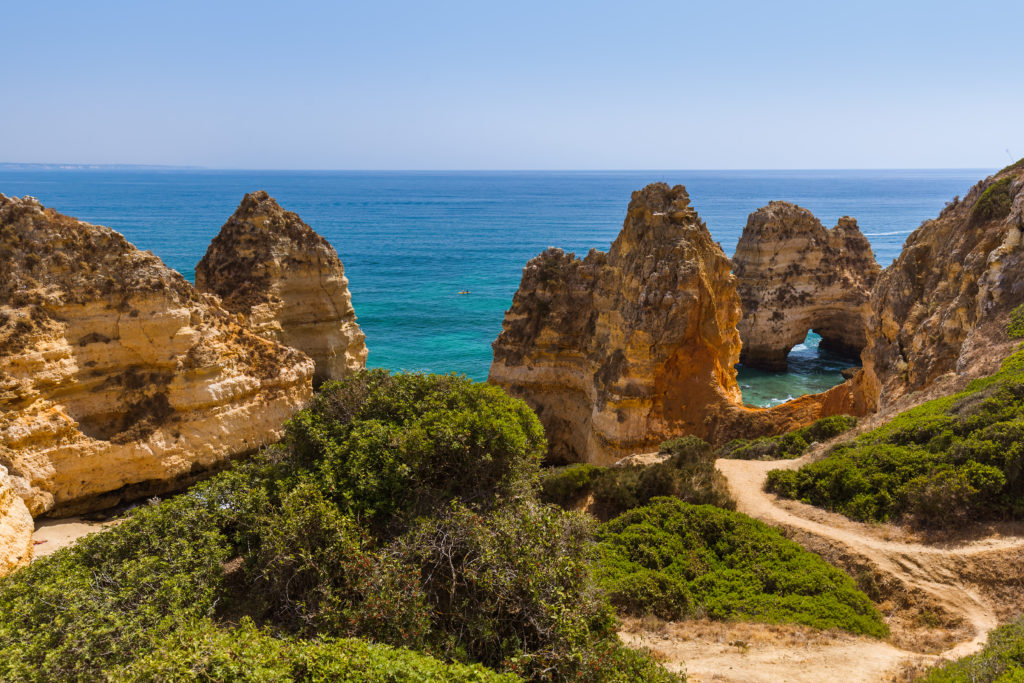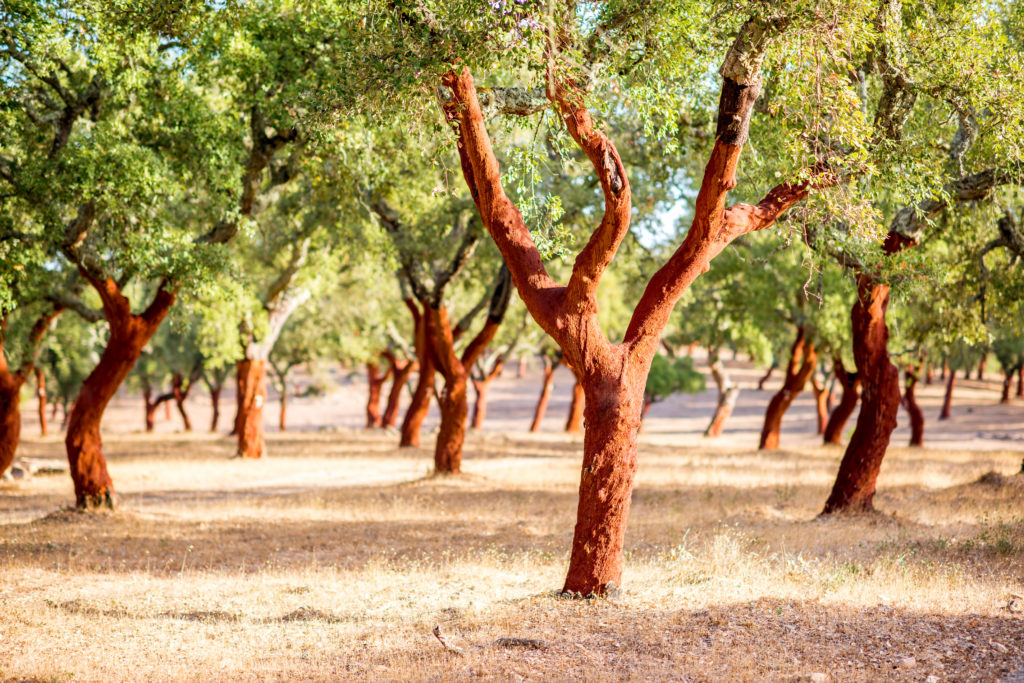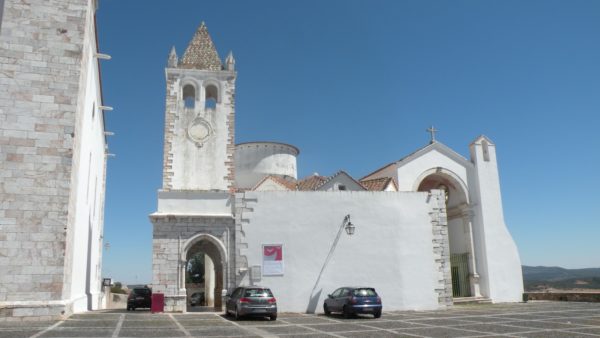Explore Seven of the Best Prehistory Sites in Europe
Do you enjoy visiting prehistory sites when you’re traveling around Europe?
You’ll soon discover that prehistory sites abound thanks to much of Europe having been inhabited by humans for tens of thousands of years.
I love prehistory sites and go out of my way to visit them–the older the better.
You’ll find breathtaking cave paintings, soaring menhirs, mysterious dolmens, logic-defying stone alignments, and compelling archeological museums.

I get a kick out of visiting prehistoric sites built by fellow humans thousands of years before recorded history. Peering at shapes drawn on cave walls by artists who lived and loved so long ago gives me a peculiar thrill. I feel connected to the creative spirit that makes us human.
Prehistory Highlights at a Glance
- Explore Lascaux IV in the Dordogne and stay in the Comtesse de Dordogne in Les Eyzies-de-Tabac
- Slow down and stay a night or two in beautiful Avebury at the B&B Dorwyn Manor
- Discover the amazing prehistory sites near Évora and stay in Albergaria Do Calvário
- Visit Carnac, one of the world’s most extensive stone alignments and stay in Hotel Restaurant Spa du Tumulus Carnac
Prehistory Sites Featured in this Post
For this post, I’ve chosen seven of my favorite prehistoric sites, but these are by no means the only ones. You’ll find hundreds more scattered around the British Isles and western Europe, particularly the western edges of Brittany and the Dordogne in France, southern Spain, and the Alentejo region of Portugal.
Location of Prehistory Sites
I’ve presented the prehistoric sites from north to south and west to east. Start at Newgrange in Ireland, head south to Portugal and Spain, go north again through the Dordogne in France, and end in Brittany.
I barely scratch the surface, but that’s great news if you can’t get enough of wandering around these ancient sites.
Here’s a map of Europe showing the seven prehistory sites featured in this post. The number assigned to each site corresponds with the number on the map below.
#1: Newgrange, Ireland
A visit to Newgrange (#1 on the map) in the Boyne Valley in Ireland is a must for prehistory lovers.
Located about 40 minutes north of Dublin near the town of Drogheda, Newgrange is a revelation. At over 5,200 years old, it predates Stonehenge and the Egyptian pyramids.
Classified as a passage tomb, Newgrange is considered a place of “astrological, spiritual, religious, and ceremonial importance.”
I was blown away. Even crowded with tourists, the place exuded an energetic and spiritual pull.
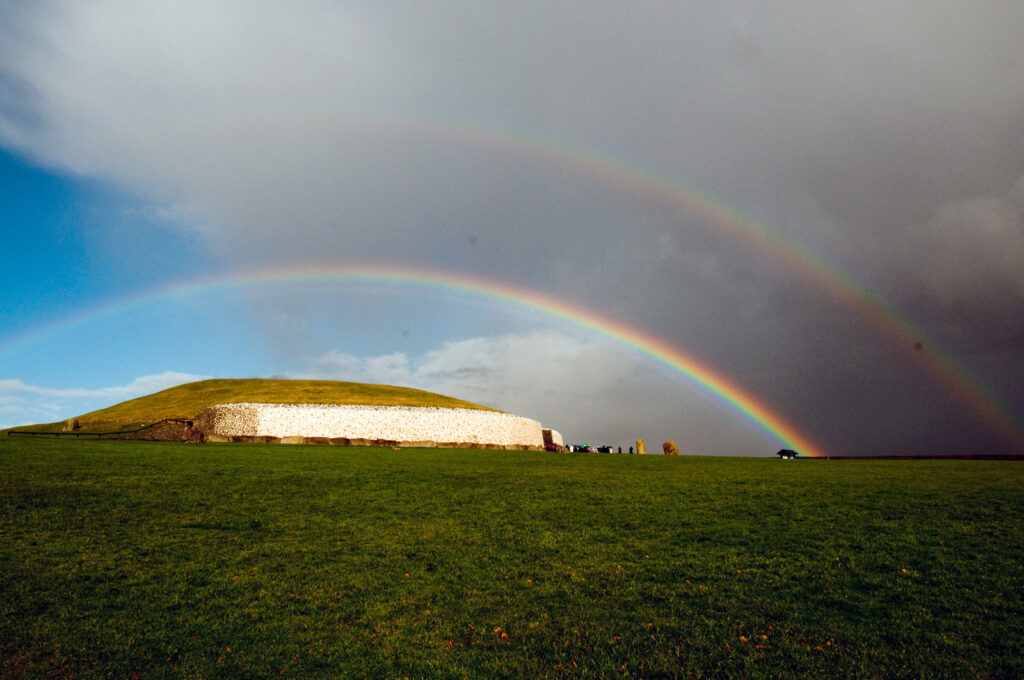
Who were the people who conceived and built the tomb all those millennia ago? As a result of its precise construction, a beam of light at dawn at the winter solstice penetrates the roof-box above the passage entrance and travels up the 19-meter passage to dramatically illuminate the central chamber.
Each year, people enter a lottery to witness the sunrise one morning from December 18 to December 23rd. Wouldn’t it be amazing to be chosen?
Visiting the Newgrange Prehistory Site
When you visit Newgrange, go first to the Brú na Bóinne Visitor Centre to pick up your tickets (book in advance). The excellent exhibits explore the seasonal nature of Stone Age society, the monument building process, and the significance of the ceremonies associated with the monuments.
From the Visitor Centre, a shuttle bus transports you to the Newgrange and Knowth monuments. You can’t enter Knowth, but at Newgrange you’re led into the tomb on a tour. When I visited, we filed into the central chamber through the narrow passageway. The lights were doused for several seconds. In the total darkness of the enclosed space, I easily imagined myself shivering in the pre-dawn chill 5000 years ago as I waited for the sun to return at the winter solstice.
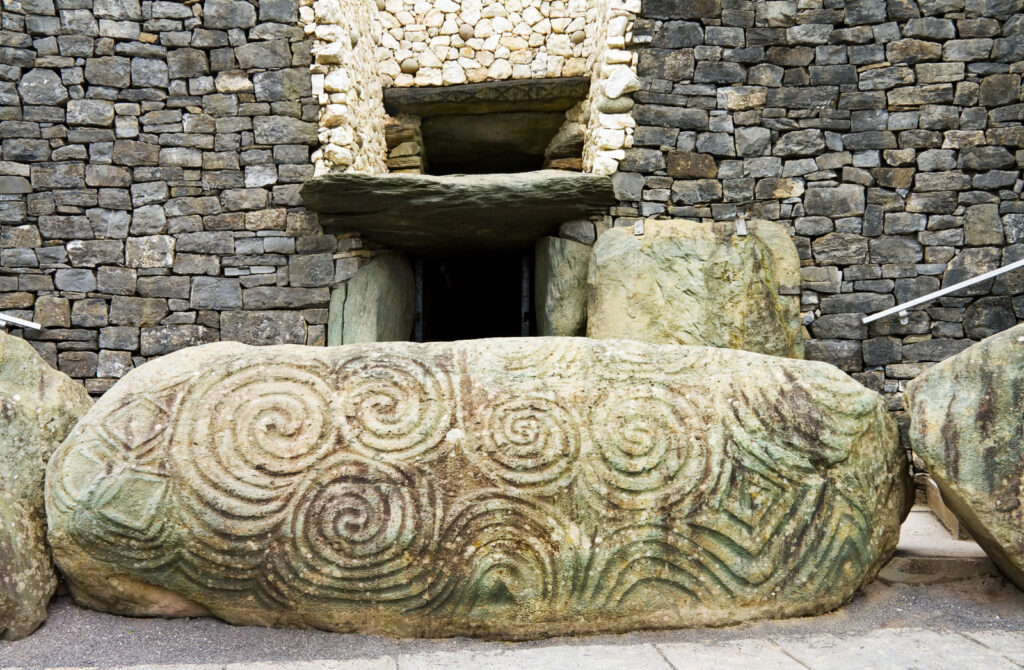
Then, light meant to represent the rising sun shone through the roof-box. For a few glorious minutes, I witnessed the magic of the light slowly extending from the floor at the base of the roof-box along the passageway to the rear of the chamber.
More Information about Newgrange
Check the Newgrange website for information about pre-purchasing tickets for the full tour that includes the Newgrange chamber. Walk-in tickets are limited, so them online as soon as you know your travel plans.
Here’s a tour that includes Newgrange, the Battle of The Boyne Visitor Centre and Monasterboice.
https://www.getyourguide.com/dublin-l31/celts-and-castles-t40213/?ranking_uuid=1dc07c07-5e01-4598-92cb-e727b107a2b0
Where to Stay in Dublin
Newgrange is easily reached from Dublin on a day trip. I suggest homebasing in Dublin, which is such a vibrant, fun city. Don’t miss a walking tour of Dublin’s literary highlights and a visit to the Museum of Literature Ireland.
Consider staying in The Fleet, a centrally located hotel with great ratings.
#2: Avebury, England
I first visited Avebury (#2) when I was eighteen and attending Reading University in Berkshire, about an hour’s drive east toward London.
Located in Wiltshire in southwest England, Avebury consists of a massive bank and ditch enclosing an area of 28.5 acres.
Within its boundaries is the largest stone circle in Britain. At one time consisting of 100 stones, the large circle in turn encloses two smaller stone circles.
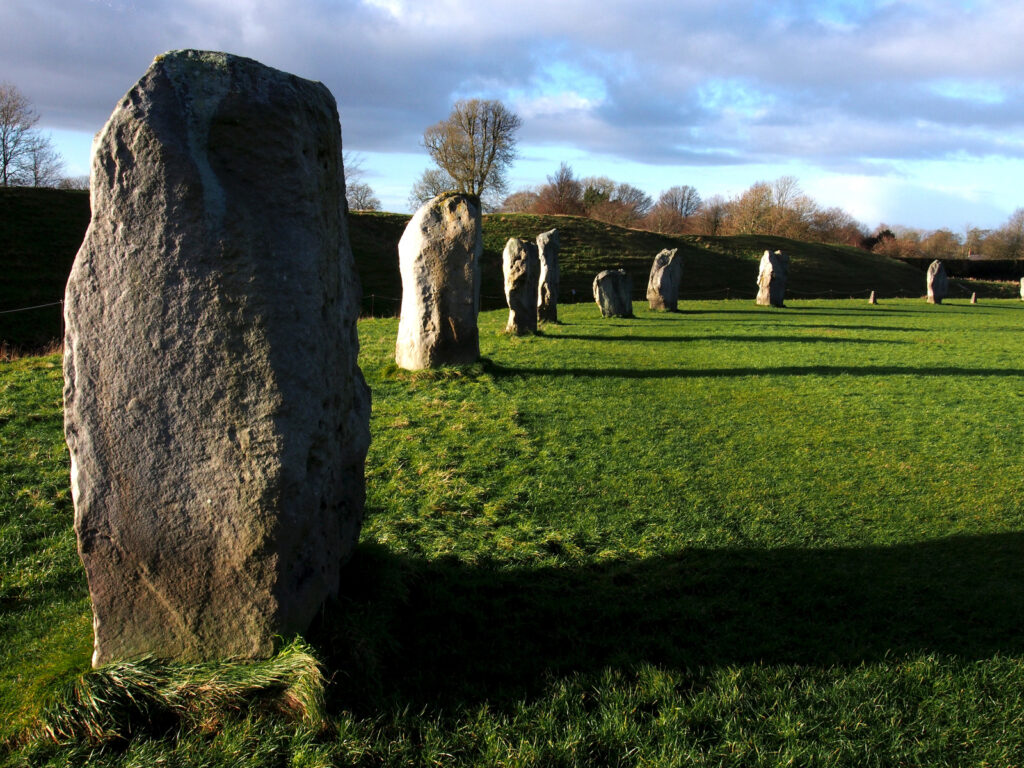
The stones encircle an area that includes part of Avebury village. The site was built and altered over several centuries from 2850 BC and 2200 BC.
I like visiting Avebury because, unlike at Stonehenge, you can wander freely around the stones. While the stones themselves are not as large and impressive as those of Stonehenge, Avebury’s location in the bucolic English countryside provides much more scope for the imagination.
Visiting Avebury
Managed by the National Trust, Avebury is open during daylight hours. While you’re there, pay a visit to Avebury Manor which dates from the 12th century and in the 1930s was the home of Alexander Keiller, an archeologist who did extensive work on the Avebury Stone Circle. The Alexander Keiller Museum includes prehistoric finds from Avebury and other monuments in the area.
Check the website for more information.
Here are some tours to Stonehenge that also take you through the beautiful Wiltshire countryside.
Staying in Avebury
Settle into a comfy B&B in Avebury and slow down for a while. Enjoy some country walks, hearty breakfasts, and lots of access to the Avebury stones. The B&B Dorwyn Manor is a good choice.
Other Prehistoric Sites in Southern England
This area of southern England includes many wonderful prehistoric sites, including Stonehenge and Silbury Hill. One of my other favorite places is White Horse Hill near Uffington in Oxfordshire. The white horse is one of several figures cut by Bronze Age people into the chalk downs of the area.
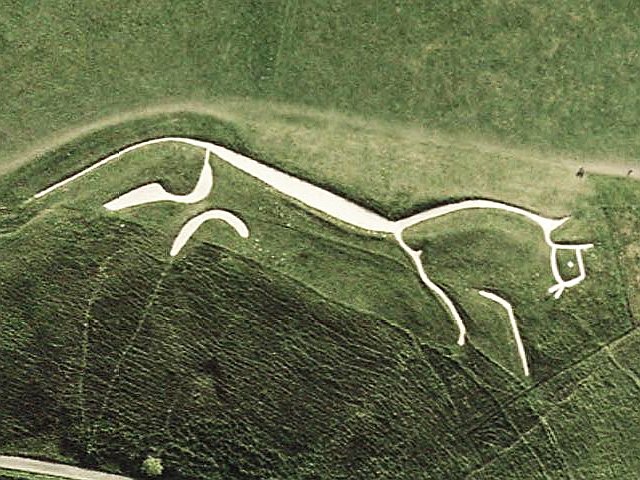
#3: Almendres Cromlech near Évora, Portugal
The Alentejo region of Portugal, notably around Évora, is a treasure trove of megalithic sites. In fact, the area is considered the most important area for megaliths on the Iberian Peninsula.
Most of the megaliths are standing stones that date from the Early Neolithic period (5500-4500 BC).
Megaliths abound in the fields around Évora: more than 10 megalithic enclosures, 100 isolated menhirs, 800 dolmens and 450 megalithic settlements. Wow!
Head west from Évora to the Almendres Cromlech (Cromeleque dos Almendres), a megalithic complex reputed to be one of the world’s oldest—over 2,000 years older than Stonehenge.
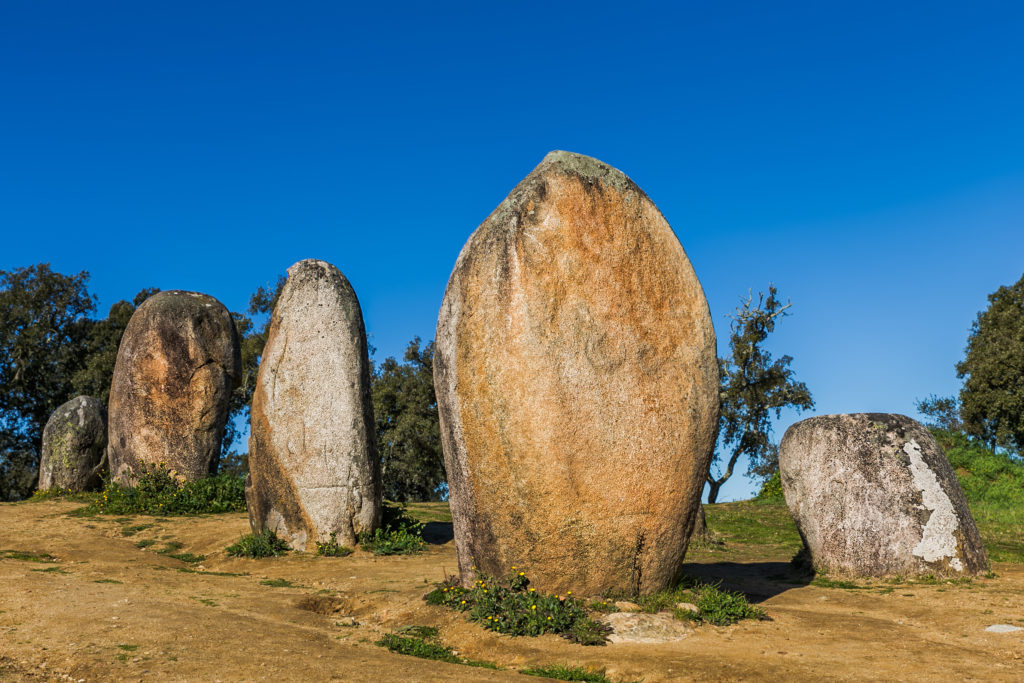
More than 100 standing stones bristle down a hillside. Wander among them at will, take pictures, and commune with the ancestral forces.
When I visited, the place was virtually deserted.
Visiting Almendres Cromlech
Follow the road signs to the site from the small village of Nossa Senhora de Guadalupe. Not far from the Almendres megaliths is the Almendres Menhir which was erected to mark the sunrise in the summer solstice
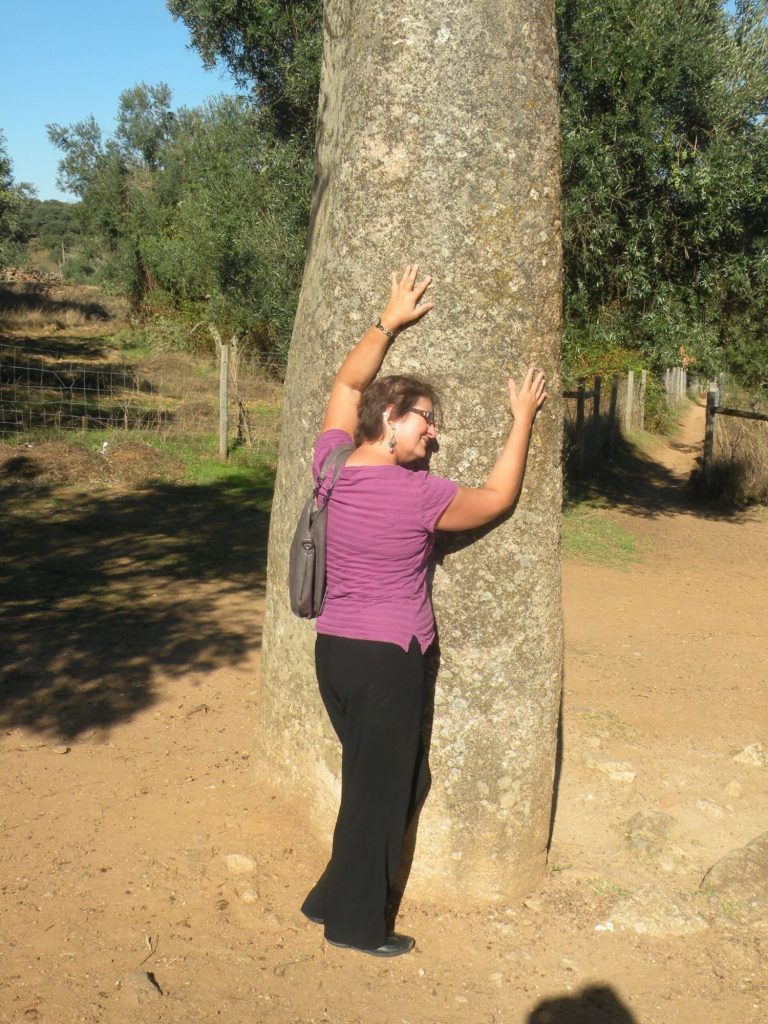
Spend an afternoon driving around the area to see evidence of a civilization that flourished millenia ago.
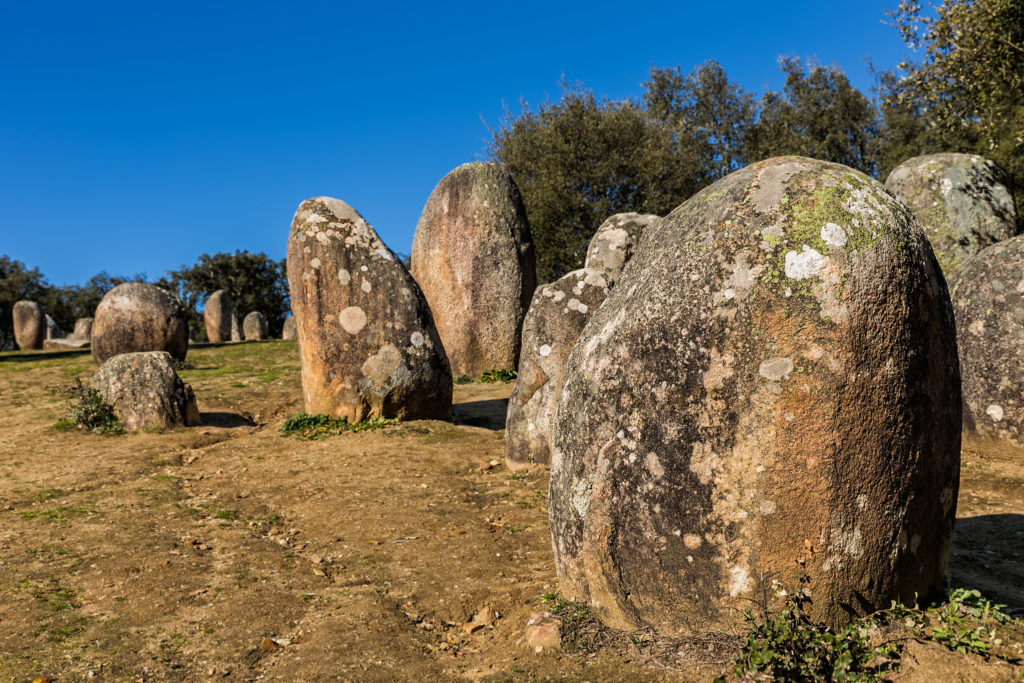
Where to Stay in Évora
Delightful Évora makes a great home base for exploring the prehistory sites in the area. I loved staying in the Albergaria Do Calvário, a stylish, comfortable hotel within walking distance of the sites of Evora.
#4: Cueva de la Pileta near Ronda, Spain
The Cueva de la Pileta is definitely worth a visit if you’re traveling near Ronda and you have a car. I learned about the caves from the owner of the beautiful little hotel we stayed at in the countryside near Ronda (see below).
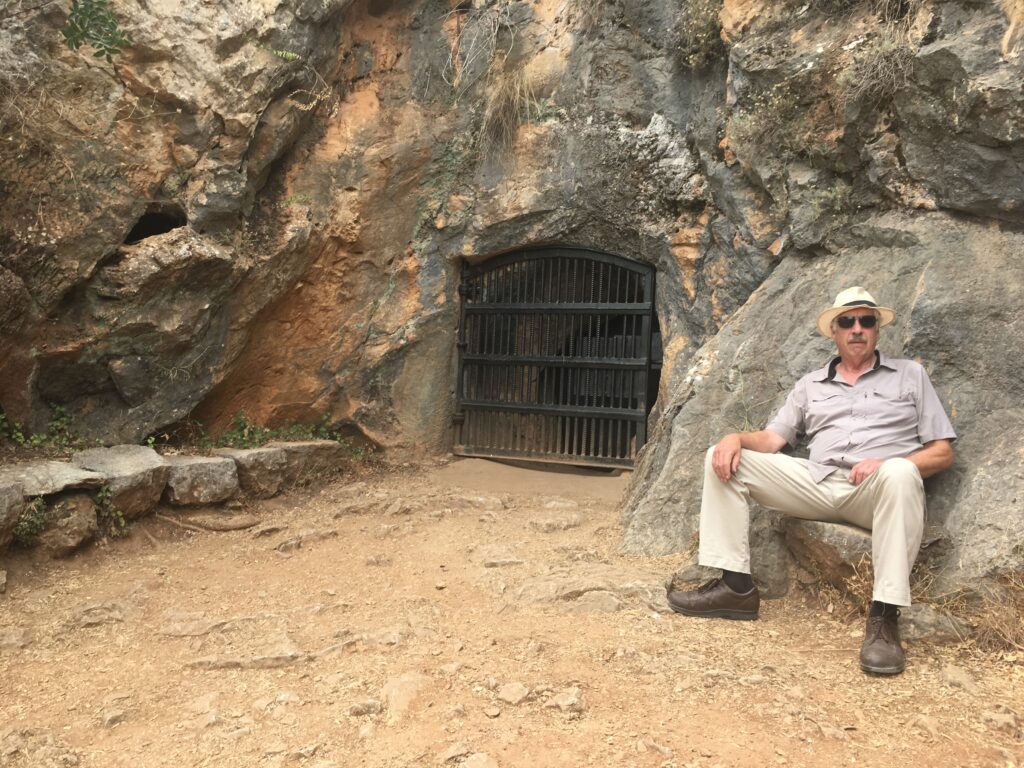
The hour-long tour in the dimly lit cave took us past paintings and drawings that are at least 30,000 years old. None of the paintings is as colorful and fully formed as you’ll see in Lascaux in France, but their incredible antiquity is awesome.
The tour group is small, the footing rough, and the experience very authentic. Our guide conducted the tour in Spanish and English.
Visiting Cueva de La Pileta
You must get reservations before you visit the cave. Check the website for more information. To make reservations, call 666 74 17 75. After parking along the road, you walk up a steep, rough pathway to the cave entrance. Bring warm clothes to wear inside the cave even if the weather is hot outside. After an hour inside the cave, you’ll be chilly.
The charming town of Ronda in fabulous Andalusia is not far from the caves. Stop here for a meal and to enjoy the sunset over the surrounding countryside.
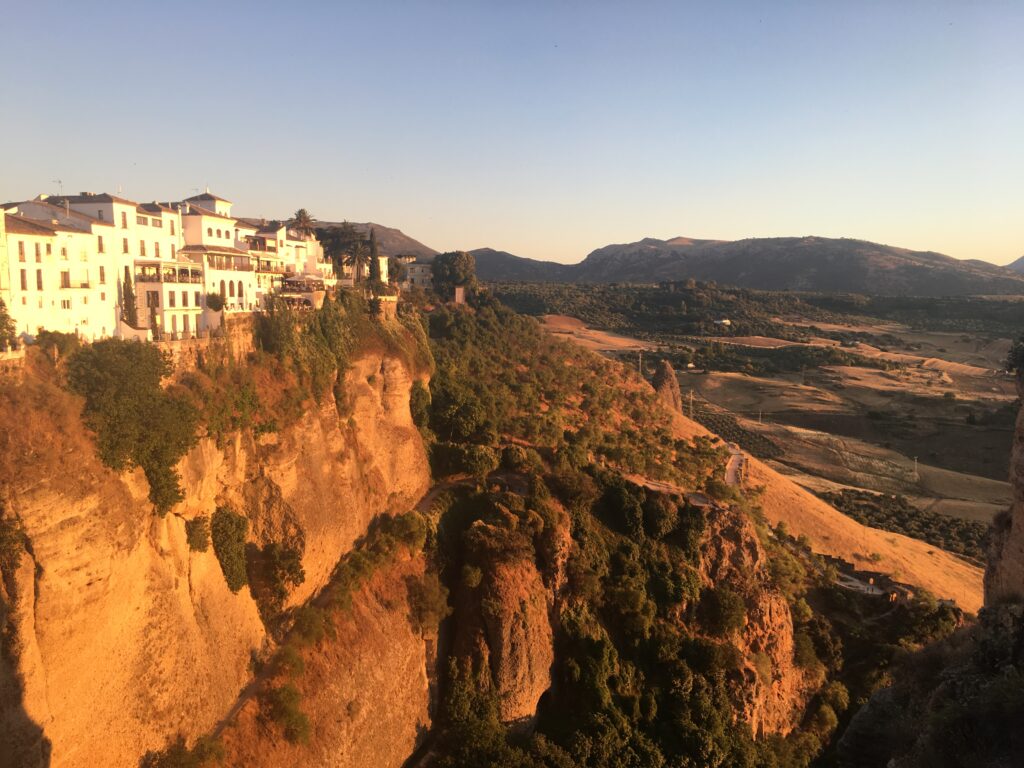
These tours take you to Ronda and around the gorgeous White Towns of Andalusia.
Where to Stay Near Ronda
I stayed in the enchanting Hotel Cortijo Las Piletas. It’s out in the countryside and so you need a car, but it’s such a relaxing place to stay with its comfortable rooms and gorgeous grounds.
#5: Lascaux, Dordogne, France
Probably the most famous prehistoric site in Europe, if not the world, is the Cave of Lascaux near the town of Montignac in the Dordogne region of France.
You can’t visit the original cave, but you can visit Lascaux IV, which is a replica of 90% of the paintings found in the original cave.
Until we visited, we thought that seeing a replica wouldn’t be worth the trip. We were wrong!
The 40-minute guided tour was wonderful and highly recommended. The unparalleled energy and beauty of the paintings is awe-inspiring.
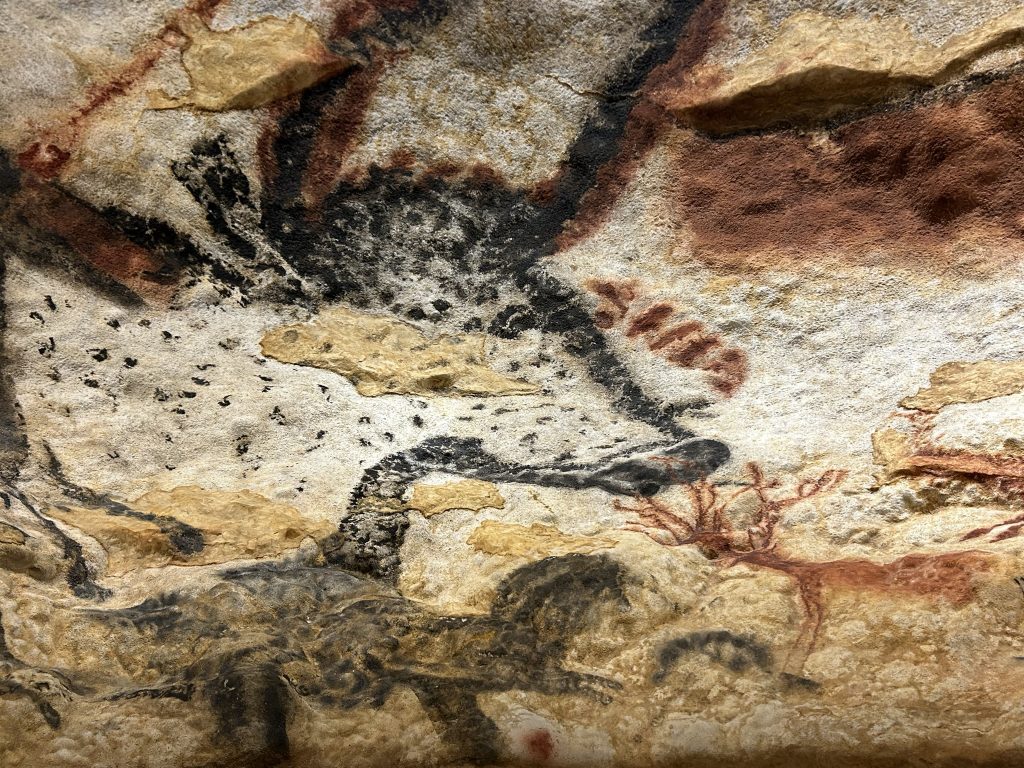
Visiting Lascaux
For more information about visiting Lascaux, check out my post about visiting and enjoying spectacular Lascaux IV. Here’s a full-day tour that takes you to Lascaux IV from Sarlat-la-Canéda:
Other Prehistory Sites Near Lascaux
The area around Lascaux is teeming with prehistory. South of Montignac is Les-Eyzie-de-Tabac, where you’ll find the wonderful Musée National de Préhistoire. Start your exploration here to discover the rich paleolithic heritage of the Vézère Valley, also known as the European “Valley of Man.”
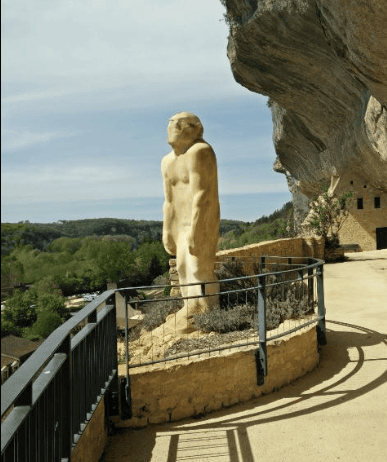
Not far from Les Eyzies is the Grotte de Font-de-Gaume where you can view over 800 engravings and drawings of prehistoric horses, bison, aurochs, lions, reindeer, and more.
The Font-de-Gaume is one of the few extensive prehistoric caves still open to the public. Check online for information and to buy tickets. Admission is limited so make sure to buy tickets well in advance.
A virtual tour of the Font-de-Gaume is also available.
Where to Stay Near Lascaux IV
You’re spoiled for choice in the Dordogne region of France. Here’s a place I’ve stayed and can recommend. It’s in Les-Eyzies-de-Tabac, location of the prehistory museum mentioned above and within easy driving distance of Lascaux IV:
The Comtesse de Dordogne in Les Eyzies-de-Tabac includes comfortable one-bedroom cottages at a reasonable price. The setting is stunning! Here’s a view of a portion of the grounds.
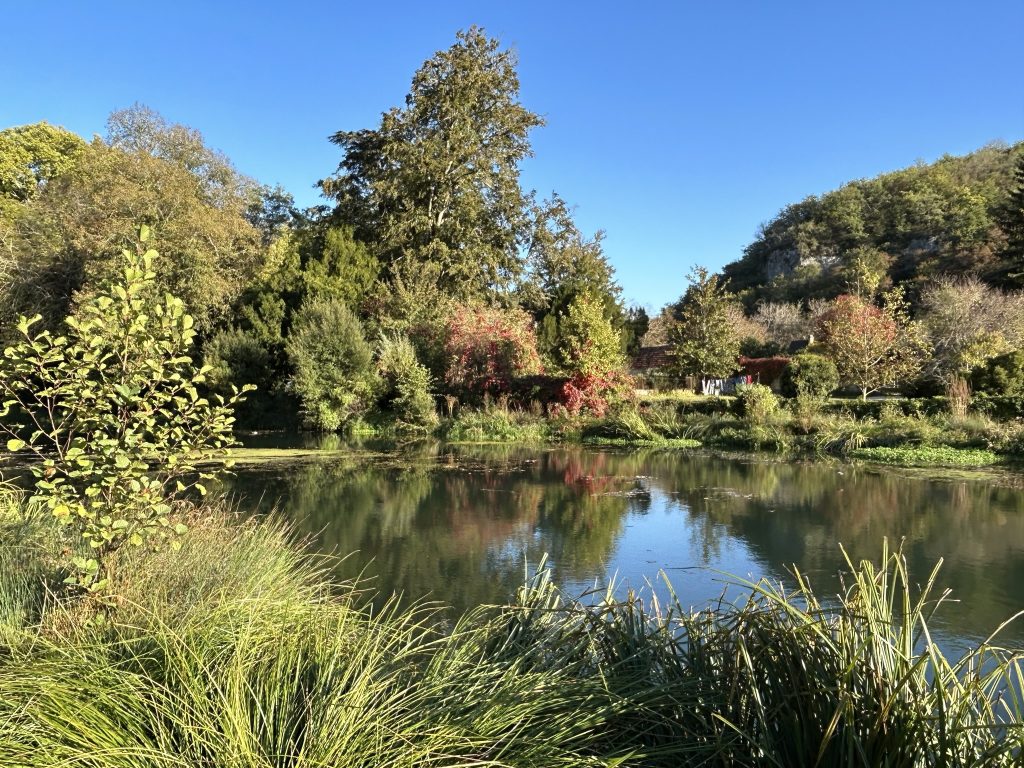
#6: Gavrinis, Brittany
I also include Gavrinis as one of my 17 Awesome Places in France You Might Not Know. Check out the others, including Les Eyzies mentioned above.
Known as the island of ancient stones, tiny Gavrinis is located in the Gulf of Morbihan, renowned as one of the largest and most beautiful bodies of water in France.
In an area brimming with ancient burial sites, stone alignments, and other Neolithic sites, the burial chamber at Gavrinis is considered one of the most interesting.
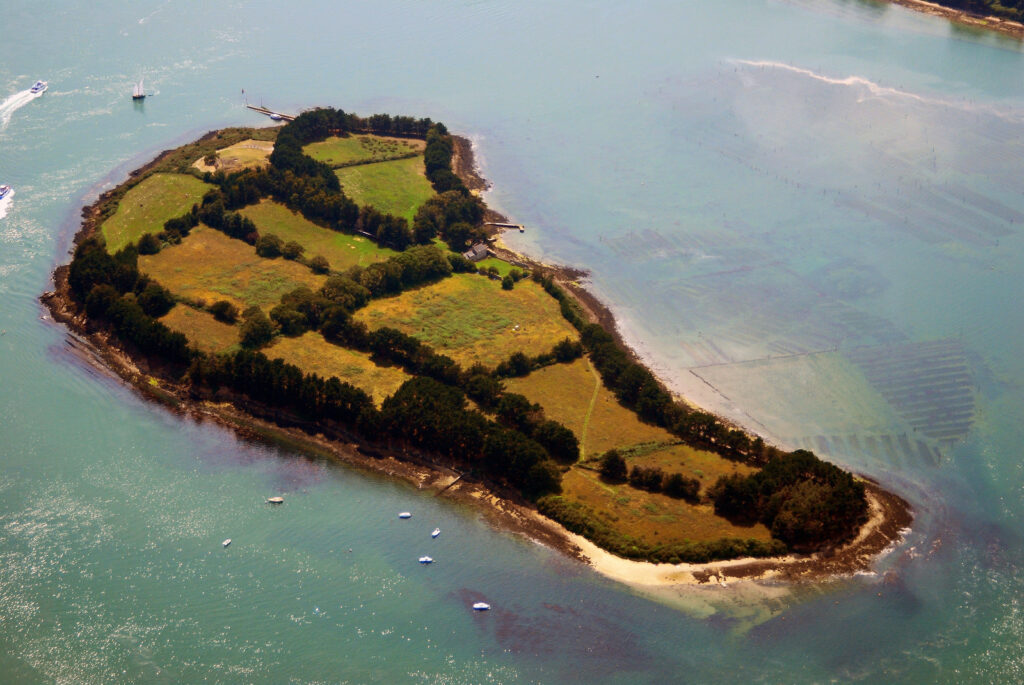
The Neolithic structure on the island of Gavrinis consists of a tumulus (earth mound) that covers a cairn (stone mound) that in turn covers a dolmen within which is the stone burial chamber.
At Winter Solstice, the sun shines down the passageway and hits the back wall.
What makes Gavrinis unique are the swirling patterns and symbols cut deep into 23 of the 29 rock slabs that form the 24-meter passageway leading to the burial chamber. The designs were cut into the stone over 5,500 years ago (3,500 BC) by some very artistic and amazing people.
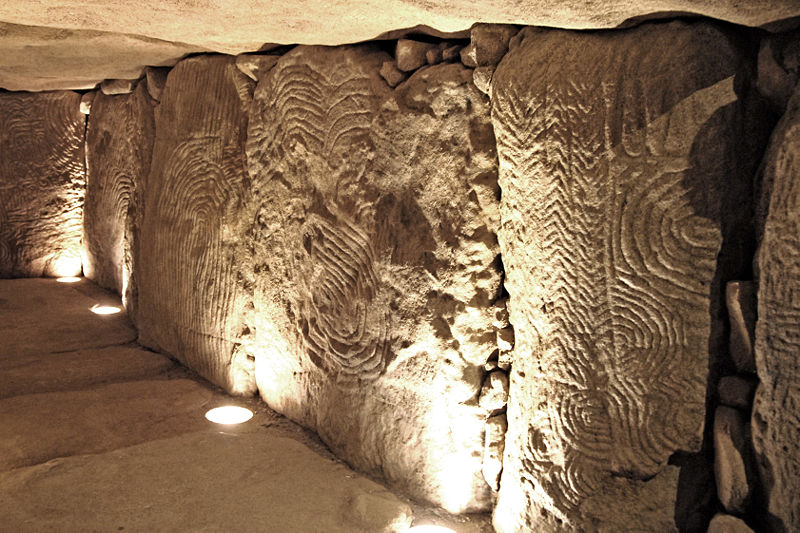
Who were the artists who created these carvings and why did they make them? You’ll find out on the 90-minute guided tour (including the boat trip) required to view the burial chamber.
The carved patterns are startling in their modernity—zigzag lines, swirls, lozenges, and circles. Some of the shapes appear to be non-abstract objects, such as axes and horns.
Visiting Gavrinis
The island is accessible by a guided tour from the small town of Larmor-Baden. The boat trip across the sparkling waters of the Gulf of Morbihan makes the 90-minute tour especially enjoyable.

Check the Brittany Tourism site for more information about touring Gavrinis.
#7: Carnac, Brittany
After visiting Gavrinis, head a little farther north to enjoy one of the most remarkable–and largest–stone alignments in Europe. Over 3,000 standing stones march across the fields near Carnac.
Gregg still remembers fondly the morning a friendly farmer opened a gate to let him wander at will through a section of the stone alignments. Gregg didn’t know at the time that the farmer was doing him a favor and that normally, the area is off limits to tourists.
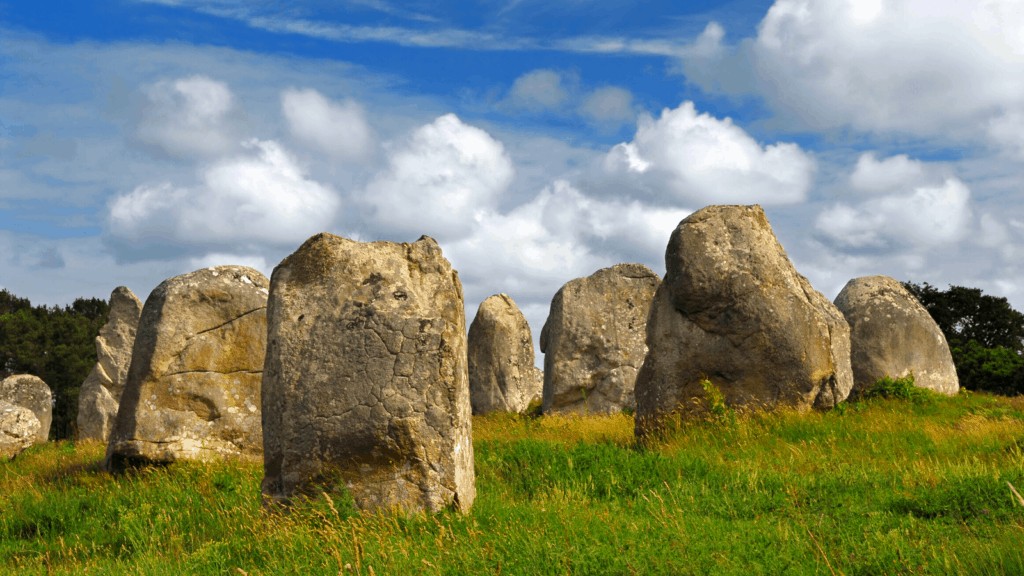
Visiting Carnac
Because it’s famous, Carnac can get crowded and attracts tour busses. Fortunately, you’ll find many other standing stones, tumuli, and dolmen throughout Brittany. Most of the time, these sites are deserted so you can commune in solitude with the spirits of the ancients.
Where to Stay in Carnac
You’ll find lots of choice in Carnac, which is a popular holiday destination for Europeans. On one trip I stayed at the Hotel Restaurant Spa du Tumulus Carnac which is quite posh, but it’s also out in the country and away from the sometimes frenetic scene near Carnac Plage (the beach area of Carnac).
Touring to Carnac
If you’re staying in Rennes and don’t have your own wheels, consider a guided tour. Here’s one with GetYourGuide:
Other Prehistory Sites in the Carnac Area
Other prehistory highlights in the area include Barnenez, one of the oldest man-made structures in the world, and the megaliths at Locmariaquer.
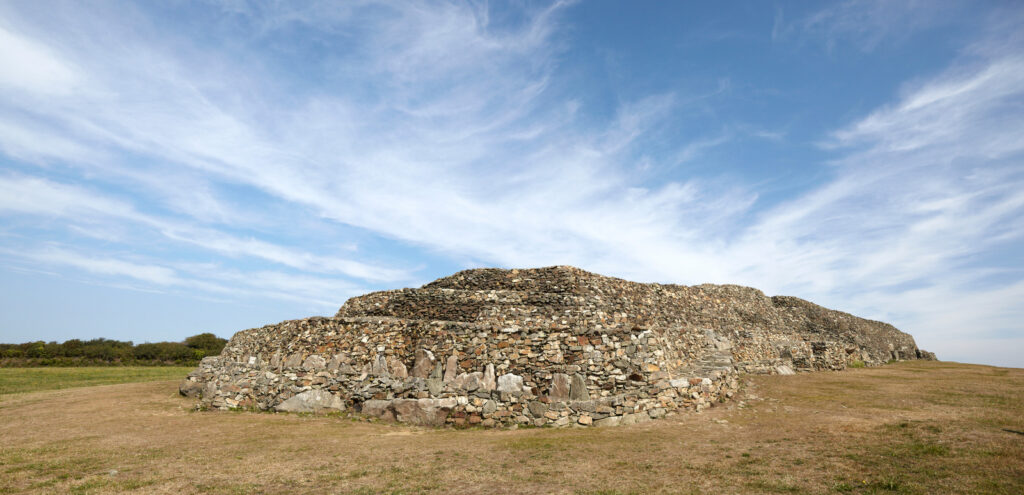

Conclusion
I never tire of seeking out prehistory sites and marveling at the intelligence that created them. So little is known about the why and the how of these incredible iterations of the creativity and drive of early humans.
As I mentioned, my list only barely scratches the surface of all the prehistoric sites scattered around Europe. As you travel, be on the lookout for stone circles, ancient caves, dolmens, and ancient burial sites.
I’ve often discovered new prehistoric sites when I wasn’t even looking for them. Check at the local tourist offices and ask your bed-and-breakfast hosts about local sites. We’d never heard of the Cueva de la Pileta until told about it by the host of the Hotel Cortijo-las-Piletas where we were staying.
I also remember stumbling across the Castlerigg Stone Circle near Keswick in England’s Lake District because I saw a sign pointing to it and, on a whim, followed it. What a magical place!
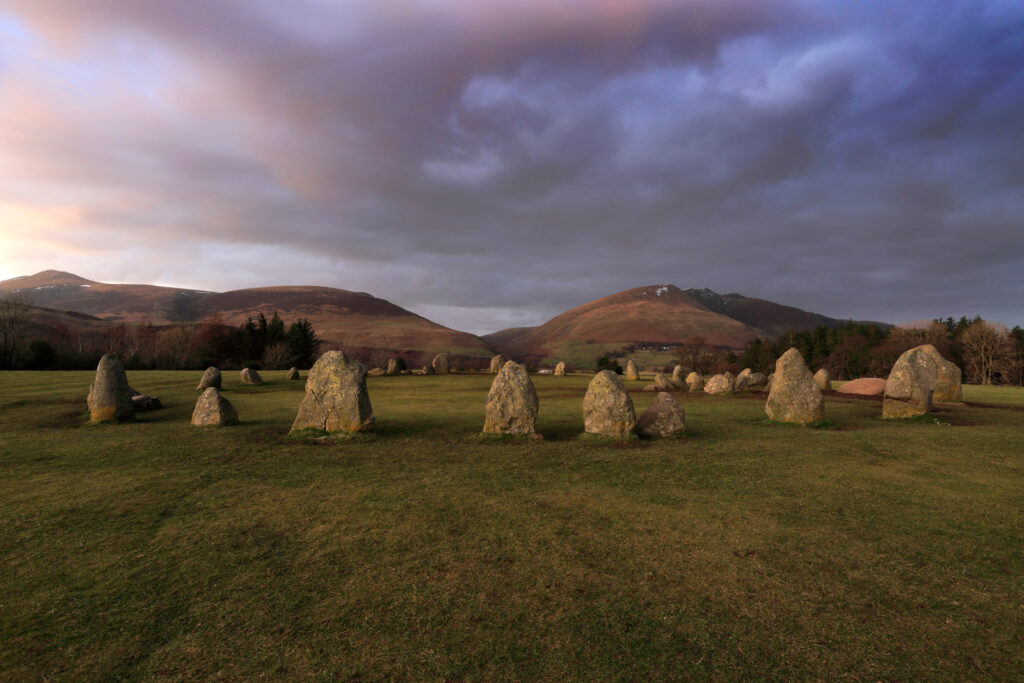
I’ll leave you with a picture of a site that is high on my list of next-sees–the standing stones of Callanish on the Isle of Lewis in the far north of Scotland.
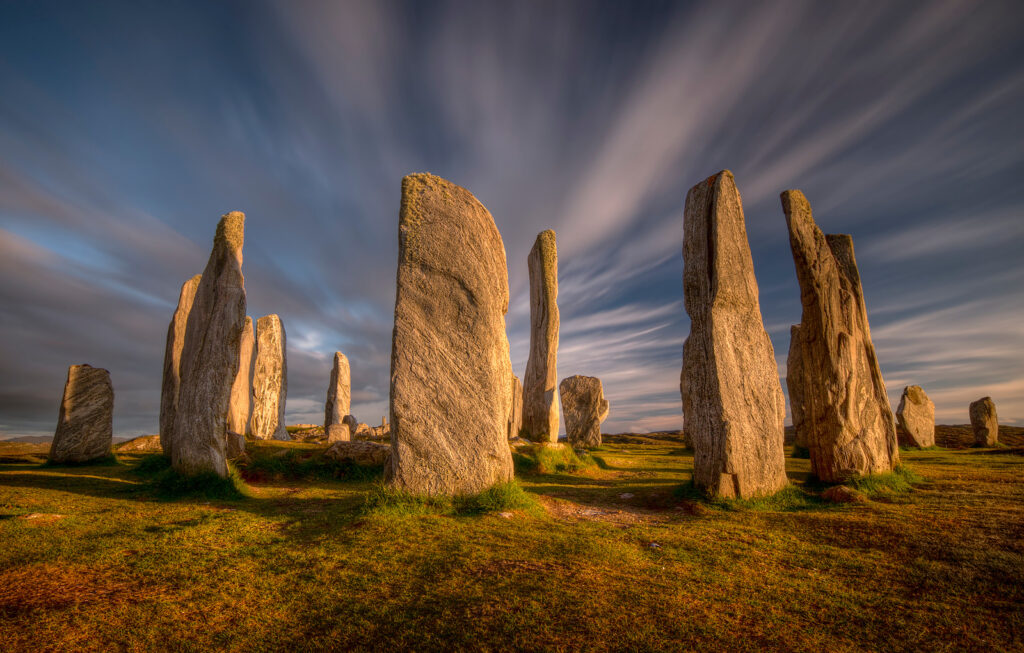
Conclusion
Do you have ancient sites you’d like to tell other Artsy Travelers about? Please leave comments below and let us know about them.
Here are some more posts on Artsy Traveler about recommended sightseeing in Europe:
